Tensions Continue In Iran’s Universities Following Stricter Hijab Enforcement
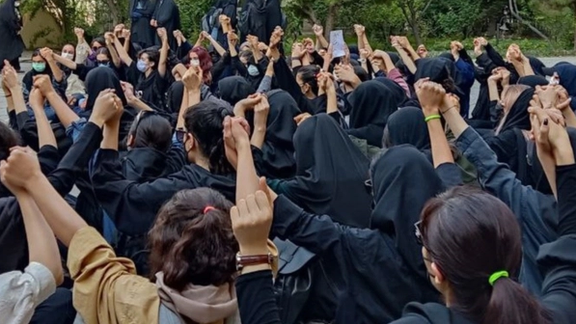
Iranian students have spoken out against brutal crackdowns taking place at Tehran University of Art where students are protesting draconian hijab laws.

Iranian students have spoken out against brutal crackdowns taking place at Tehran University of Art where students are protesting draconian hijab laws.
An unknown number of students at the fine arts institution in Tehran have been staging a sit-in against stricter hijab rules inside the university premises since Wednesday, with many seriously injured by the campus security forces on Thursday and several others arrested by plainclothes agents on Saturday.
The sit-in began after the authorities announced new rules for the Art University that require girls to wear a pullover headscarf with stitched front (called maghna’e in Iran) which is like a nun’s coif, completely covering the head and the neck. Failing to comply, the university has announced, would result in suspension.
The College of Arts students published a statement condemning “the gender apartheid” and the violent acts against the protesting students. The head of campus security, Hamzeh Borzouei, himself attacked a group of about fifty students who had begun the sit-in protest and injured at least five of them.
Following the incidents, several separate statements were issued online by students from institutions including Allameh Tabataba'i University, Tarbiat Modarres University and Shahid Beheshti University in Tehran, vowing to continue protests against the repressive policies.
Expressing solidarity with the students of the College of Arts, one of the statements claimed that "the policy of maximum repression that has intensified in a coordinated manner in universities around the end of the academic year, like other forms of repression, will ultimately fail."

Iran’s government film watchdog has warned producers that if they give roles to actresses who have removed their hijab in public, their films could be banned.
Films, music, books and art in general is strictly regulated, monitored and controlled by the Islamic government in Iran. Films or TV shows must first get a production permit to make sure they are in sync with the official ideology and religious restrictions. After a film is produced it is reviewed again for a screening permit.
Some websites in Iran on Sunday published the copy of a letter sent to film producers by Habib Eilbaygi a deputy in the government film watchdog, dubbed Cinema Organization. In the letter he says that producers “should refrain from employing” individuals who have been outspoken on the issue of hijab and “have ignored the country’s laws.”
Anti-hijab and anti-regime protests erupted in Iran in September 2022 after Mahsa Amini, a young woman was arrested in the street by the notorious ‘morality police’ and received fatal head injuries during here detention and later died in hospital.
Many celebrities, including actors and sports figures came out in support of the protests angering the regime. Dozens of women among them also removed their headscarves in public, a direct show of defiance against the ruling clerics.
Following the protests tens of thousands of ordinary women now walk in streets without hijab for the first time since the early 1980s.
Hardliners dominating all branches of government are now trying to restore their control and force women to observe hijab rules.

Prominent Iranian opposition figures have called for a three-month campaign of protests and strikes culminating in the murder anniversary of Mahsa Amini.
Exiled Prince Reza Pahlavi and football legend Ali Karimi published a tweet on Friday urging people to hold anti-regime protests and strikes to commemorate the killing anniversary of Mahsa Amini who was murdered by the Islamic Republic in September last year.
“Today is the birthday of the proud champion of the nation, Majidreza Rahnavard. Freedom-loving and patriotic Iranians across the world are honoring his memory. Let us turn Majidreza's birthday into the beginning of a three-month campaign and— with further planning, organization, and solidarity— prepare for protests and strikes on the anniversary of Mahsa Amini’s passing,” read their message.
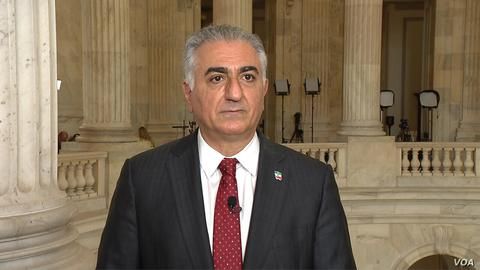
The twenty-three-year-old Majidreza Rahnavard was executed in December after the Iranian regime charged him with killing two members of security forces during ‘Woman, Life, Freedom’ protests. All protesters who were hanged or received long prison sentences were tried without due process of law, often even without their own defense attorney.
Activists on social media criticized the execution of the 23-year-old Rahnavard as "a criminal act" by the clerical establishment to deter dissent. He was apparently a constitutional monarchist.
Several other protesters were also executed by the Iranian regime after protests erupted following the killing of 22-year-old Kurdish Iranian woman Mahsa Amini on September 16 in the custody of morality police enforcing strict mandatory dress code laws.
The government has used thousands of well-armed regular and irregular forces to repress the protests, using severe beating, firing shotguns that have killed and blinded hundreds of people and even military weapons.
Meanwhile, tens of Iranians gathered in front of the UK’s Foreign Office in London on Friday to mark the birth anniversary of Majidreza Rahnavard and Abolfazl Adinezadeh.
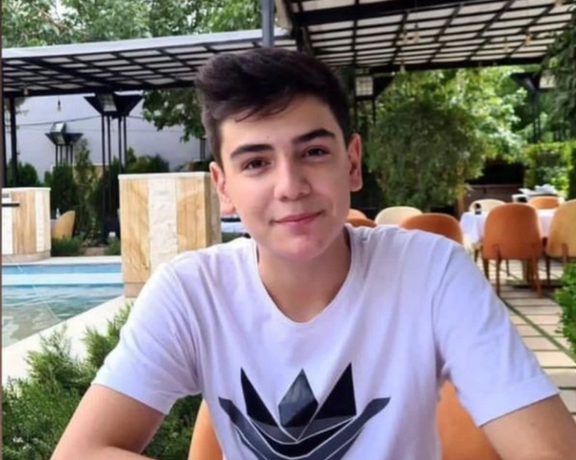
Iranian security forces killed Abolfazl Adinezadeh by firing dozens of shotgun birdshots at him at point-blank range in the city of Mashhad on October 8. He died as a result of liver and kidney damage, according to the BBC.
The security forces arrested the sister, father and uncle of Abulfazl at his grave on Friday.
In the evening of the same day, Abolfazl’s mother, and all their relatives were arrested in Faruj in North Khorasan Province.
The security and judicial authorities of the Islamic Republic forced his family to bury the body of the teenager in the cemetery of Najafabad village near Faruj. In the past months, his family was under pressure to keep silent regarding the murder of their son.
After their arrest, a number of families, whose beloved ones were killed during the protests, called for support for Adinehzadeh’s family, asking people to celebrate his birthday on Saturday.
Despite the government’s use of iron fist, it seems a new chapter of anti-regime protests would be opened across Iran on the eve of Maha Amini’s death anniversary.
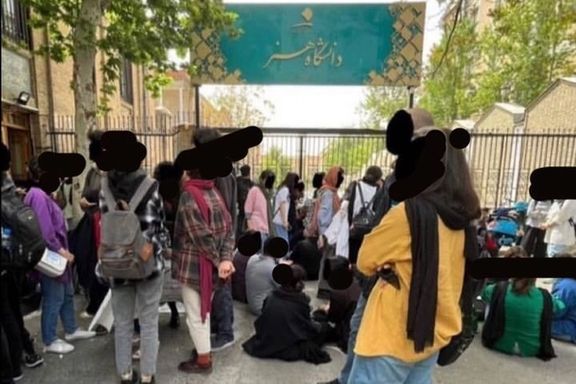
At least ten students at Tehran’s College of Arts were abducted on Saturday morning by plainclothes agents and taken to an unknown location after days of protests.
Iran's Student Union Council reported that the students were detained while the police special guards were deployed around the campus. One eyewitness tweeted that around 40 male and female agents showed up in cars and vans before the abduction.
According to the council, there is no information about the whereabouts of the detained students.
They had begun a sit-in protest on Wednesday against new, stricter hijab rules with several of them seriously injured in the early hours of Thursday by the head of security at the college.
According to the popular Telegram channel of the National Student Unions Council, Hamzeh Borzouei attacked a group of students and seriously injured several.
Students said on social media that Borzouei and other university officials made various threats against them including the threat of calling in the military to deal with them.
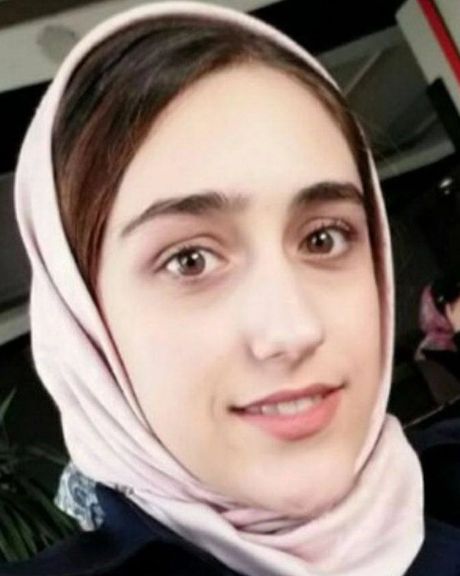
The new rules require women to wear a pullover headscarf with stitched front (called Maghna’e in Iran) which is like a nun’s coif, completely covering the head and the neck. Failing to comply, the university has announced, would result in suspension.
In the early 1980s wearing Maghna’e became compulsory in all universities, government offices and even banks but its use gradually became obsolete in some more lenient establishments including the College of Arts.
Angered by the detention of their colleagues, the students of the universities of Art and Tehran expressed solidarity with their colleagues.
“The policy of maximum repression, which has intensified in universities at the end of the academic year, will eventually fail like the other forms of repression,” read their statement published on Friday.
“Until the last moment, we stand against all these repressive measures,” stressed the students.
Meanwhile, the students of Soore University in Tehran also expressed solidarity with the protests at Tehran’s College of Arts in a separate statement.
On Friday, at least 80 students from Madani University in Tabriz, northwest of Iran, were also summoned for supporting the protests.
Iran's Student Union Council reported that the students were summoned to the disciplinary committee and campus security issued restraining orders to several students in the last days of the academic year.
“The Disciplinary Committee of Azarbaijan Madani University has issued final verdicts for 20 students, 25 students are waiting for the meeting of the committee and the issuance of the verdict, and 35 students have been summoned for the hearing,” adds the report.
The Council says 20 students have received sentences of "suspension for half a year" and "temporary suspension".
The students of Madani University announced in a statement that they will remain united and resist the mounting pressure.
In recent months, authorities have increased pressure on students for hijab, presumably to stop the growth of the anti-compulsory hijab movement in universities across the country.
The National Student Unions Council said in April that 435 students had been suspended or expelled in universities nationwide, where they had staged many protests and sit-ins since the beginning of the Mahsa movement last year.
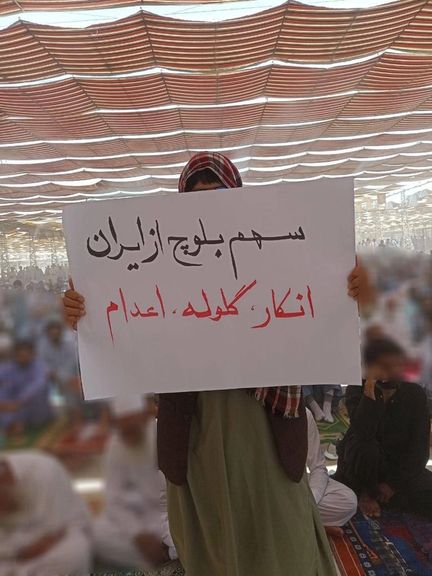
The people of Zahedan from the Baluch Sunni minority in southeastern Iran once again on Friday protested against political repression and the execution of citizens.
Images on social media show people holding placards bearing slogans on the 36th consecutive Friday of protests against the Islamic Republic.
“Negligence, Bullets, Execution, the Share of Baluch People In Iran," read one of the placards.
Since protests started nine months ago following the death of Mahsa Amini in custody of hijab police, regime forces have repeatedly arrested Baluch citizens in large numbers as they kept their street protests alive.
The people of Zahedan have been protesting every Friday since September 30, when security forces opened fire on civilians, killing about 90 protesters.
Meanwhile, the public relations of IRGC ground force in the region reported clashes between law enforcement and Basij forces, and what it described as bandits in Sistan-Baluchistan province.
According to the report, a Basij militiaman named Ardeshir Khatibi and two armed men were killed in the shootout.
As Sunni Muslims, Baluch citizens are both an ethnic and religious minority. Estimates of the Iranian Baluch population range from 1.5 to 2 million people. The Baluch community – along with the Kurds -- has always been among the most persecuted minorities and has the largest number of people executed in the country.
Most Baluchis are executed over drug-related charges, but activists say their trials lack due process and poverty-stricken drug mules are often executed without having proper legal representation.

Several students at Tehran’s College of Arts protesting stricter hijab rules were seriously injured in the early hours of Thursday by the head of campus security.
According to the popular Telegram channel of the National Student Unions Council, at about 2:30 am Thursday, Hamzeh Borzouei attacked a group of about fifty students who had begun a sit-in protest against new, stricter hijab rules and seriously injured several.
The Telegram channel said university authorities have still not allowed the students who began their sit-in on Wednesday afternoon to leave, and campus security has prevented anyone from bringing food or water to the students.
Students said on social media that Borzouei and other university officials made various threats against them including the threat of calling in the military to deal with them. Plainclothesmen and other security forces were already present in and outside the university in quite big numbers.
Students also said that security claimed they blocked food delivery to prevent poisoning that they could later be blamed for if students fell ill. Students also said the besieged protesters were not allowed to use the toilettes.
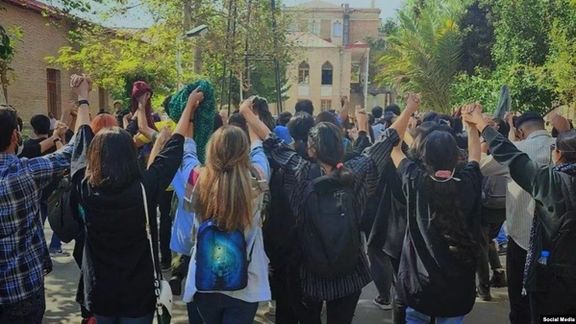
The new rules require girls to wear a pullover headscarf with stitched front (called maghna’e in Iran) which is like a nun’s coif, completely covering the head and the neck. Failing to comply, the university has announced, would result in suspension.
In the early 1980s wearing maghna’e became compulsory in all universities, government offices and even banks but its use gradually became obsolete in some more lenient establishments including the College of Arts.
The hijab required in the Islamic Republic consists of a long and loose tunic in muted colors worn over trousers with a similarly plain headscarf that covers all hair and shoulders. Authorities including Supreme Leader Ali Khamenei say wearing a long black veil (chador in Persian) that covers from head to toe is the ‘optimal hijab’.
In the past few years, the anti-compulsory hijab movement which took root with a social media campaign organized by US women’s rights activist Masih Alinejad in 2017, called White Wednesdays, has hugely grown. The movement has gained greater momentum since the death in custody of the 22-year-old Mahsa Amini in September 2022 and the protests that her death sparked.
Defiance of hijab has now turned into a form of civil disobedience. Many women who have been in a tug of war with the authorities for years are now adamant to be hijab free in public. They can be seen defiantly rejecting the head scarf everywhere, from restaurants to banks and parks where previously, they could not even enter without covering their head.
In recent months, authorities have increased pressure on students for hijab, presumably to stop the growth of the anti-compulsory hijab movement in universities across the country.
The National Student Unions Council said in April that 435 students had been suspended or expelled in universities nationwide, where they had staged many protests and sit-ins since the beginning of the Mahsa movement last year.
In recent months some political parties and dissidents in Iran, including the reformist Etehad-e Mellat Party and Zahra Rahnavard who has been under house arrest together with her husband Mir-Hossein Mousavi for thirteen years have demanded the abolition of the compulsory hijab laws.